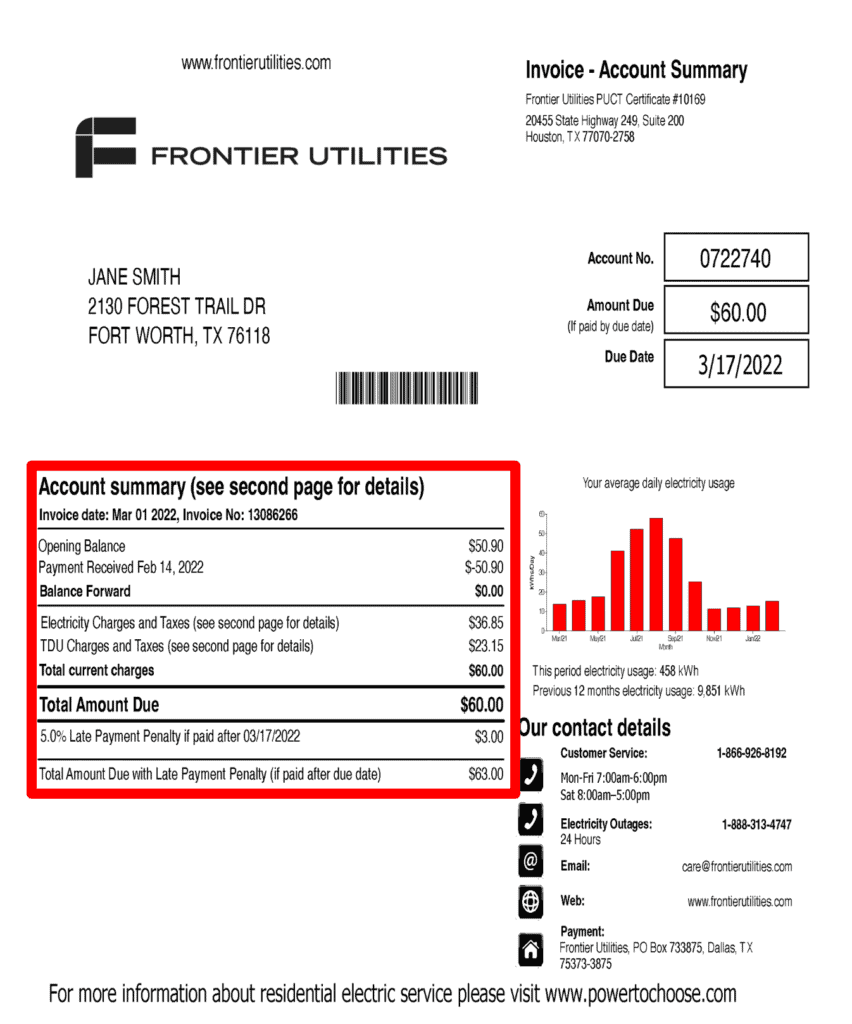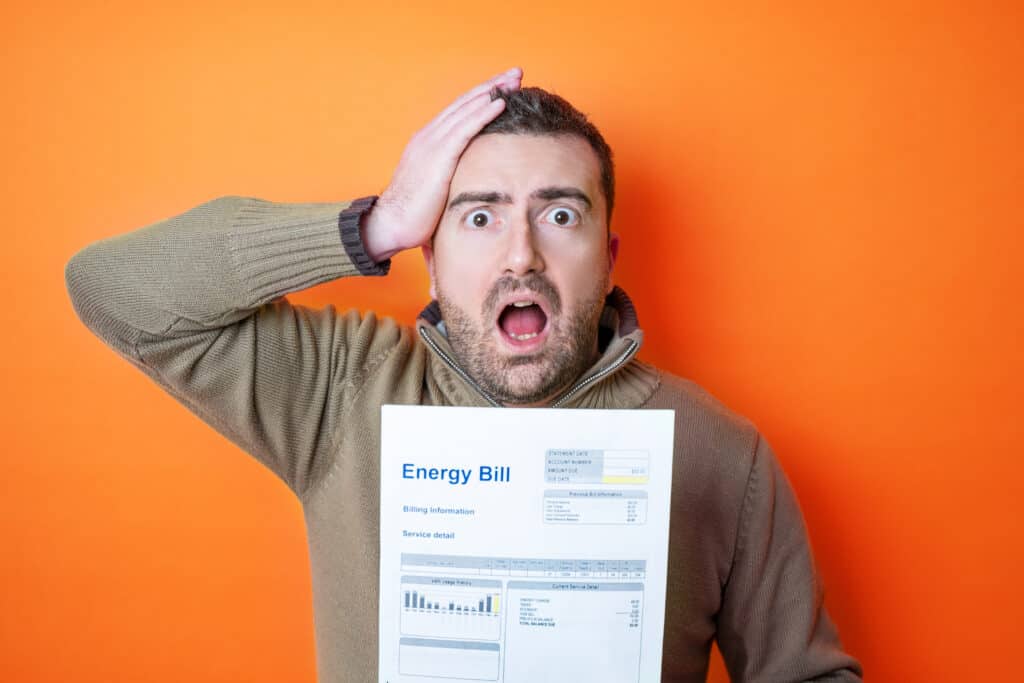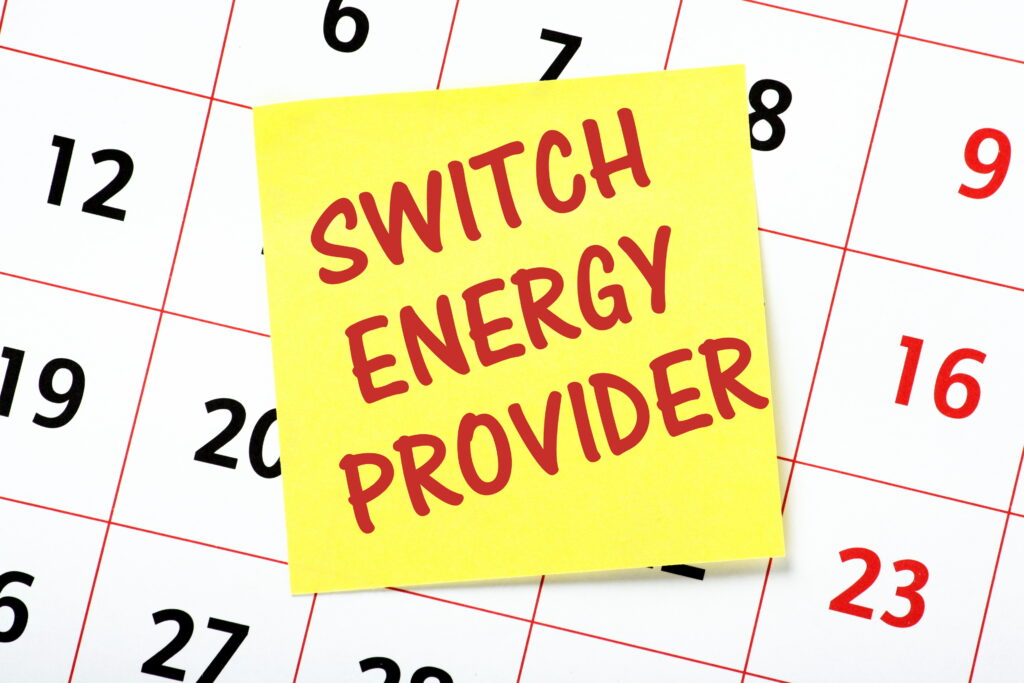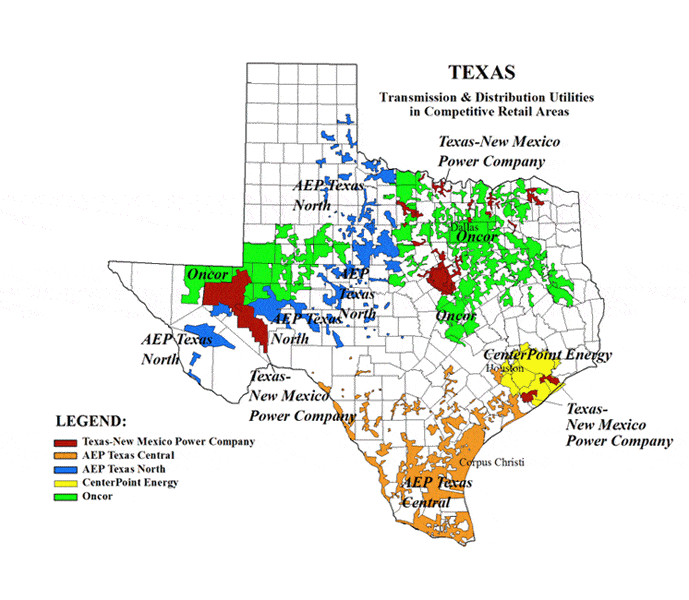Any product or company names, marks, or logos shown on this page are the property of their respective owners. Compare Power is an unaffiliated, independent marketplace. Get unbiased, accurate information backed by our commitment to editorial integrity.
Uncover the Secrets of Your Electricity Bill (and Save Some Serious Cash)
Hey there, I know that sinking feeling when you open up a sky-high electricity bill.
Your heart races, your palms sweat, and a million anxious thoughts start swirling.
What the heck happened? Is this for real?
First off, take a deep breath. We’ve all been there, and you’re not alone.
High bills can happen for various reasons, and they’re not always as dire as they seem at first glance.
But I get it – that doesn’t make the sticker shock any less awful.
The good news is that there are ways to investigate your billing mystery and dispute any funny business.
And I’m here to walk you through it, step by step.
Welcome to your crash course on auditing the hell out of your electricity bill.
We’ll dig into the nitty gritty of your statements and usage to puzzle out what’s going on.
So grab your latest bill, a calculator, and maybe a soothing beverage. We will do this together, and by the end, you’ll feel way more in control of your electricity costs.
Sound good? Fantastic. Take a deep breath, and let’s dive in…
Preparing for Your Audit
Electricity bills can be complex, with various charges and terms that may seem confusing at first glance.
Start by familiarizing yourself with the key sections of your bill:
Summary of Charges: This section provides an overview of the total amount due, including energy charges, delivery charges, taxes, and other fees.

Detailed Usage: Here, you’ll find information about your electricity consumption during the billing period, usually measured in kilowatt-hours (kWh).

Rate Information: This section details the price per kWh you’re charged for electricity, which may vary depending on your plan.

No idea what you are looking at? Check out How to Read Your Electricity Bill to get up to speed.
Gathering Necessary Documents
A thorough audit requires a bit of legwork to collect:
Past Electricity Bills: You’ll want to have a bare minimum of 12 months of past bills on hand to dive into the problem.
It’s even better if you have a full two years of bills to get a sense of year-over-year change.
You should be able to access these on your electricity company’s account portal or by digging through your old mail.
Electricity Contract: Get a hold of your Electricity Facts Label (EFL) and your Terms of Service (TOS). Digital copies should be available in your account portal, or your electricity company may mail you a copy.
These contain all the details about the fees your electricity company can charge you.
Your Usage: The last and most important is your historical electricity usage data.
I know it sounds scary, but if you have your bills, you already have this data right in front of you.
And if, for some reason, your bill doesn’t make your usage obvious: Hop onto Smart Meter Texas
Setting Up Your Audit Workspace
Now that you have all your docs in one place, it’s time to set up your workspace for the audit. I recommend using a spreadsheet app like Excel or Google Sheets.
If you’re more of the old-school type, you can do this all by hand. Regardless of what tools you use, the more organized you are, the easier it is to spot any issues with your bills.
Here’s a list of helpful tools you’ll want:
- Spreadsheet
- Calculator
- Notepad and pen
Whether using a spreadsheet or handwriting, I recommend setting up a table like the screenshot below to organize your work.

With your audit workspace ready and your documents at hand, you’re well-prepped to dive into the details of your electricity bill.
Step 1: Fill In Your Data
All right, here comes the fun part. Your first step is to go through your bills line by line and fill out the spreadsheet.
The most important columns are kWh Usage, Cost per kWh, and Total Charges.
These will give you an overview of where your bill is currently. Here’s what mine looks like now all filled in:

Now, to address a few elephants before we dive into what we’re looking at here:
1. If you check my copy’s math, you’ll notice things don’t add up. I’ve left out the taxes that add around four to five dollars a month to keep the Other Fees/Credits column cleaner, and to be honest, I didn’t want to do the extra math.
I’d highly recommend you include those small charges to be as thorough as possible.
2. You’ll notice that in October 2023, there was a big credit on my bill, and I only paid $22.07 for electricity that month. That was very nice, but I had already paid that money.
The credit is my initial deposit to start the plan, being refunded after 12 months of service. You must figure out what is happening if you encounter anything unusual like this.
Now, let’s dive into our analysis.
Step 2: Check for Usage Jumps
Alright, let’s start digging into your bills. We first want to look at any patterns or trends in your monthly electricity usage.
Doing this analysis gives you a better understanding of how much power you typically use and what factors may be causing spikes.
Looking at my example usage, you’ll see that my apartment used 733 kWh on the low end of things and hit a peak of 1,576 kWh in August 2023.

The main reason to check for trends is to identify any anomalies or months where your usage was high compared to the norm.
You’ll see from mine that January of this year had a big spike in usage. Those are the months we want to dig into.
Big spikes could signal an issue like a malfunctioning appliance sucking up way more electricity than it should.
Or maybe a billing error charged you for too much usage that month.
Seasonal Patterns
Before we discuss the anomalies on your bill, I want to address seasonal patterns quickly.
Texas has pretty consistent seasonal patterns regarding usage. Most summers, think June through August. Your usage will jump as it gets hot outside.
Then, after we make it through the fall, assuming we get some fall weather, our cold winters will also drive up your usage as you heat your home.
Any time in between, you’ll see lower usage when the weather is mild. The important thing to remember here is that you want to “normalize” your billing data based on the season.
Expect it to be higher in the summer and winter, but it shouldn’t exceed what you usually see.
If you see massive spikes in the summer or winter, that could indicate:
- Your heating system is inefficient and driving up costs
- You have poor insulation, leading to heated/cooled air leaking out
- There could be issues with your thermostat settings
- Or maybe you’re just cranking electric space heaters on
Here’s what summers and winters look like for my apartment.

Year-Over-Year Changes
In addition to checking monthly and seasonal weirdness, look at how your total annual usage changes from one year to the next.
Did it jump up a lot after doing a significant home renovation that increased your square footage?
Or did your usage drop after upgrading to new energy-efficient appliances and windows?
Identify what lifestyle changes correlate to the increases or decreases you see.
Heads up – if your provider raised rates one year, your annual costs could be higher even if usage stayed flat.
If you’re on a fixed-rate contract, they would’ve sent you a renewal letter to sign before this could take effect.
And if you just signed one, that might be why you got a high bill.
So, keep an eye on the cost per kWh to distinguish legitimate usage changes from pure pricing hikes.
Unexplained Anomalies
Circling back to those weird individual monthly spikes – if you can’t point to any specific reasons, like heat waves, new appliances, etc., to explain them, that could indicate:
- A faulty appliance or HVAC system undergoing a repair issue and running way less efficiently
- Potential problems with your electrical wiring, meters, or utility service
- Errors in the meter reading or billing calculations resulting in overcharges
Those types of anomalies are where being detailed with this analysis pays off. Please don’t ignore them!
We’ll discuss diagnosing those a little further down the page. But first, you’re probably wondering about that crazy January bill I got.

If you’re sitting there connecting the dots, thinking that almost $400 seems nuts for an apartment electricity bill, I’m right there with you.
I checked everything I could think of, going through our steps here. And unfortunately, the answer is boring.
Check my usage that month. I used over 2,100 kWh monthly, while most apartments use more than 500 kWh.
Guess what? I was working from home for almost a week since I was sick.
I ran my desktop, multiple monitors, laptop, TV, had my iPad plugged in, and pretty much anything else in my apartment that uses electricity.
My wife took a day or two off work to hang out with me. If you remember, it was dang cold in January, and my apartment uses electric heat.
So, I think it’s pretty clear why my usage was so high and I got a high bill. I used a lot of electricity and had to pay for it.
Not all high bills mean you have to worry. Here are some common reasons legit usage spikes may happen that aren’t necessarily cause for concern:
- Heat wave or cold snap making your heating/cooling work overtime
- Having more house guests than usual
- Running extra equipment like portable heaters or dehumidifiers
- New energy-hungry appliances like a hot tub or electric vehicle charger
Step 3: Evaluate Your Usage
If you’re still reading, I’m guessing we haven’t pinpointed exactly what’s going on with your bill.
We checked for trends and got a high-level view of your usage patterns. But what if the usage you got charged for wasn’t what you used?
It sounds crazy, but it happens occasionally, and the best way to check is to verify the usage on your bill with your Smart Meter data.
The reason this is so important?
Your monthly usage and how much you pay for it are the two biggest factors affecting your bill.
You want to ensure that no misreadings, billing errors, or efficiency issues artificially inflate that number.
Smart Meter Data
Most Texas homes, apartments, and commercial buildings have smart meters installed that can be accessed anytime.
The best part is that these smart meters let you get granular when analyzing your usage. If you want to dig in down to 15-minute intervals, you can.
This gives you the most precise picture of how and when you use electricity.
Plus, you can double-check to ensure your electricity company charges you for something you’re not using.
Accessing the Data
There are two options for how you access data from your smart meter.
First, we will use the data from your electricity company.
That’s the data you see on your bill, so if we want to double-check that data, we should probably consider the second option.
Door number two leads us to Smart Meter Texas, where you can make an account.
With your bills in hand, it’s easy to access and analyze the data. If you’re unsure what you’re doing, check the link above for a walkthrough on setting up your account and digging in.
You’ll see monthly, daily, and 15-minute interval data from there.

Evaluate What You See
Now, it’s time to check and see if your electricity company is billing you fairly. Double-check the usage column on your spreadsheet or table for each month.
See if it matches what you were charged for on your bill. The two should match exactly or be very close.
If not, there could be an issue with the meter reporting incorrect readings, or your company is getting estimations instead of actual data.
Understanding Billing Cycles
Quick side note here. It’s important to understand that bills don’t necessarily cover full calendar months of usage.
Utility companies read meters, and providers cycle bills on their schedules every 28-32 days.
So your “March” bill may include a few days from late February and early April if that’s when the meter readings happened.
Don’t assume the billing period covers the complete 3/1 – 3/31 unless you verify the exact meter read dates.
No Smart Meter? No Problem
If you don’t have a smart meter or can’t access that data for some reason, don’t worry. You can still manually record meter readings yourself each month.
Most electric meters have an easy-to-read digital display that cycles between showing the latest reading and other meter information. Make a habit of writing that number down on the same day every month.
Then, compare your recorded readings to the “meter read” line on your utility bills. If they don’t match up, there could have been an error.
Potential Discrepancies
So what if you go through all this effort verifying meter readings, and the totals still don’t quite match the kWh usage on your bill? It’s time to put on your detective hat and dig in.
Possible reasons could include:
- Misaligned bill cycle dating that needs to be checked
- Errors or gaps in smart meter data reporting
- Mistakes by meter readers or providers estimating usage incorrectly
- Issues with your meter itself requiring testing/calibration
Don’t panic if minor discrepancies exist in the 1-2% range. That can happen. But if you’re seeing variances over 5% with no good explanation, you’ll want to take that up with your electric company.
Do More With Your Data
Beyond verifying the total, reviewing the hourly/daily breakdowns lets you see your patterns of when you use the most electricity.
Is there a big spike in the evenings when everyone gets home? Or does usage ramp up more in the afternoon when summer heat maxes out?
Identifying those peak times can help target where to focus efficiency efforts.
Like adjusting thermostat schedules, running appliances overnight, or upgrading to more efficient models of those energy hogs.
Remember that, in rare cases, smart meters can have reporting glitches and miss recording data.
If you see straight zeros for certain days/times when you know the home wasn’t vacant, it’s worth double-checking that those periods didn’t get underreported.
Step 4: Check the Cost per kWh
Your usage trends are mapped out; check. Cross-referenced billed usage and your smart meter data, check.
Next up is checking if you’re being charged the correct rate on your monthly bills.
Why check rates? Remember, the cost per kWh is one of the biggest line items that affect your bill.
You want to make sure the rate charged matches what’s laid out in your contract.
Otherwise, even a tiny overcharge on the rate will be multiplied across all your usage, and you’ll be ripped off.
Fixed vs. Variable Rates
If you’re like most Texans and have a fixed rate, it should be pretty straightforward to double-check the rate listed on your bill and compare it to the rate on your EFL.
I wouldn’t be doing my job if I didn’t note here that the rate you see on that EFL isn’t precisely what you end up paying.
Your EFL lays out the “calculation” for the rate you should be paying. The frustrating part is that it usually means what you pay for 500 kWh isn’t the same as what you pay for 1,500 kWh.
You’ll need to do some math to determine how your rate is calculated.
Dive into the details: How to Calculate the True Cost of Any Texas Electricity Plan
The general rule of thumb is that your bill will show what you were charged for your usage, so it should be relatively straightforward to check the math.
For those living wild with a variable-rate plan, you’ll likely need to check your company’s website or historical rate notices to find the accurate rate for each billing cycle month.
Either way, make a note of that rate for each monthly bill.
Verifying the Charges
In your spreadsheet, calculate the supply charge portion of each monthly bill based on the appropriate rate and your total kWh usage. So, for example:
- July 2022 Usage: 1200 kWh
- Contracted Rate: $0.098 per kWh
- Expected Supply Charge: 1200 kWh x $0.098 = $117.60
Then, compare your calculated expected charge to what was billed on that month’s statement’s supply or energy portion.
If the amount billed is higher than expected, it could indicate that you were overcharged on rates for that month.
Rate Overcharges
Any significant overcharges on supply rates are worth disputing with your provider. The impact can increase over 12 months, so don’t let it slide.
For instance, you were billed at $0.11 per kWh instead of the $0.098 contracted rate.
That’s just a $0.012 difference multiplied by 1000 kWh monthly usage.
You overpaid $12 for that one billing cycle alone.
Now, add that up for every month of the year. That’s over $200 down the drain you could’ve used for something else.
Prorated Rates
One scenario that can confuse you is when providers calculate bills with prorated rates for partial months if meter readings don’t align with your billing cycle dates.
For example, maybe your July bill was:
- 15 days at $0.10/kWh
- 16 days at $0.12/kWh
This results in a blended average rate that might look higher than your fixed contract price but is technically correct based on the calendar proration.
Just be aware of potential situations like that when investigating rates.
One Final Caveat on Rates
The last thing I want to mention about the electricity rate side is that I am only covering what I would call straightforward plans here.
Straightforward plans don’t include anything like bill credits or time-of-use discounts like free nights and weekends.
If you are on a plan with bill credits or time-of-use discounts, the rate you pay can jump wildly depending on whether you are getting those discounts.
That means you could get a discount and a reasonable rate one month, and the next, you could miss out on it and be stuck with a high bill.
If you have one of these plans, I highly recommend diving into our Calculating the True Cost of Any Texas Electricity Plan page I mentioned.
It covers the details of calculating the costs of these types of plans alongside the exact formulas you’ll need.
Dive into the details: How to Calculate the True Cost of Any Texas Electricity Plan
Step 5: Check Other Charges on Your Bill
The fifth and final step you’ll want to take is going through all the other charges on your bill.
Things like:
- Delivery/TDSP fees from your utility
- Metering charges or monthly base fees
- State taxes and utility assessments
- Any miscellaneous “other” charges
These other line items can contain incorrect calculations, fees that violate your contract terms, or charges for which you don’t understand the justification.
Double-check these charges with your contract’s current TDU fees and the TOS doc.
Identifying and disputing those can lead to significant savings as well.
Delivery Charges
For delivery charges (TDSP, TDU, or transmission fees), you should look up the approved rates for your specific utility and delivery area.
Remember that they can change twice yearly, so you might see a change on your bill when updated.
Calculate the delivery charge based on your monthly kWh usage and compare it to what’s on your bill.
Anything weird may be an overcharge worth disputing.
Fixed Fees
Whether it’s a flat monthly charge, metering fee, minimum usage fee, or anything else – verify that any fixed recurring fees match what’s listed as allowable in your contract’s EFL and TOS documents.
Taxes & Other Charges
For taxes and other percentage-based charges like utility assessments, validate that the percentage rates and calculations based on your usage are accurate.
Check that sales tax is being applied correctly to only the energy supply and delivery charges, not duplicated on top of taxes already included. Identify any erroneous charges you can’t find defined.
When in doubt, have your provider explain each charge line by line and substantiate it with your contract details.
Don’t let ambiguous “other charges” slide if you don’t get a clear justification.
Auditing, Disputing & Savings
And there you have it – you’ve audited your electricity bills like a forensic accountant.
You’ll uncover anything wrong with your bill by analyzing historical trends, verifying meter readings, checking rates, and scrutinizing every line-item charge.
You can dispute with evidence and get corrections or credits issued from there.
Over time, mastering this process puts you in control of your monthly electricity costs. Any savings might not seem massive monthly, but they can add up over a year.
More importantly, the power is yours to hold your electric providers accountable to the agreed-upon rates and terms.
FAQs
How do I read my electricity bill?
Start by locating these key sections:
- Summary of total charges for the period
- Meter usage readings in kWh
- Detailed line items like energy supply charges, delivery fees, taxes
- Rate/plan details showing price per kWh
No idea what you are looking at? Check out How to Read Your Electricity Bill to get up to speed.
What should I do if I find discrepancies on my bill?
First, validate any suspected errors by checking rate/fee details against your contract terms. Gather evidence like calculations and past bills for reference.
Contact your provider and politely request an explanation or correction. If that doesn’t work, file a formal complaint with the Public Utility Commission of Texas (PUCT).
How can I reduce my electricity bill?
Give these a try to cut down your electricity costs:
- Implement energy efficiency upgrades like insulation, weatherization, and new appliances.
- Choose an electricity plan optimized for your usage patterns and rates.
- Practice energy-saving habits with programmable thermostats when you use electricity.
- Consider renewable energy options like green plans or solar.
Is switching electricity plans worth the effort?
If your usage patterns or household situation has changed, switching plans can save hundreds per year by better aligning with your needs.
But factor in any termination fees from your current contract against potential savings. Sometimes, waiting for your contract term to end makes more sense.
Our Texas-based energy experts are here to help:
Live Chat (bottom right, Mon-Fri: 8:30 AM – 6:30 PM)
Call 855-441-3030 (Mon-Fri: 8:30 AM – 6:30 PM Sat: 9 AM – 4:30 PM)
Email [email protected]










